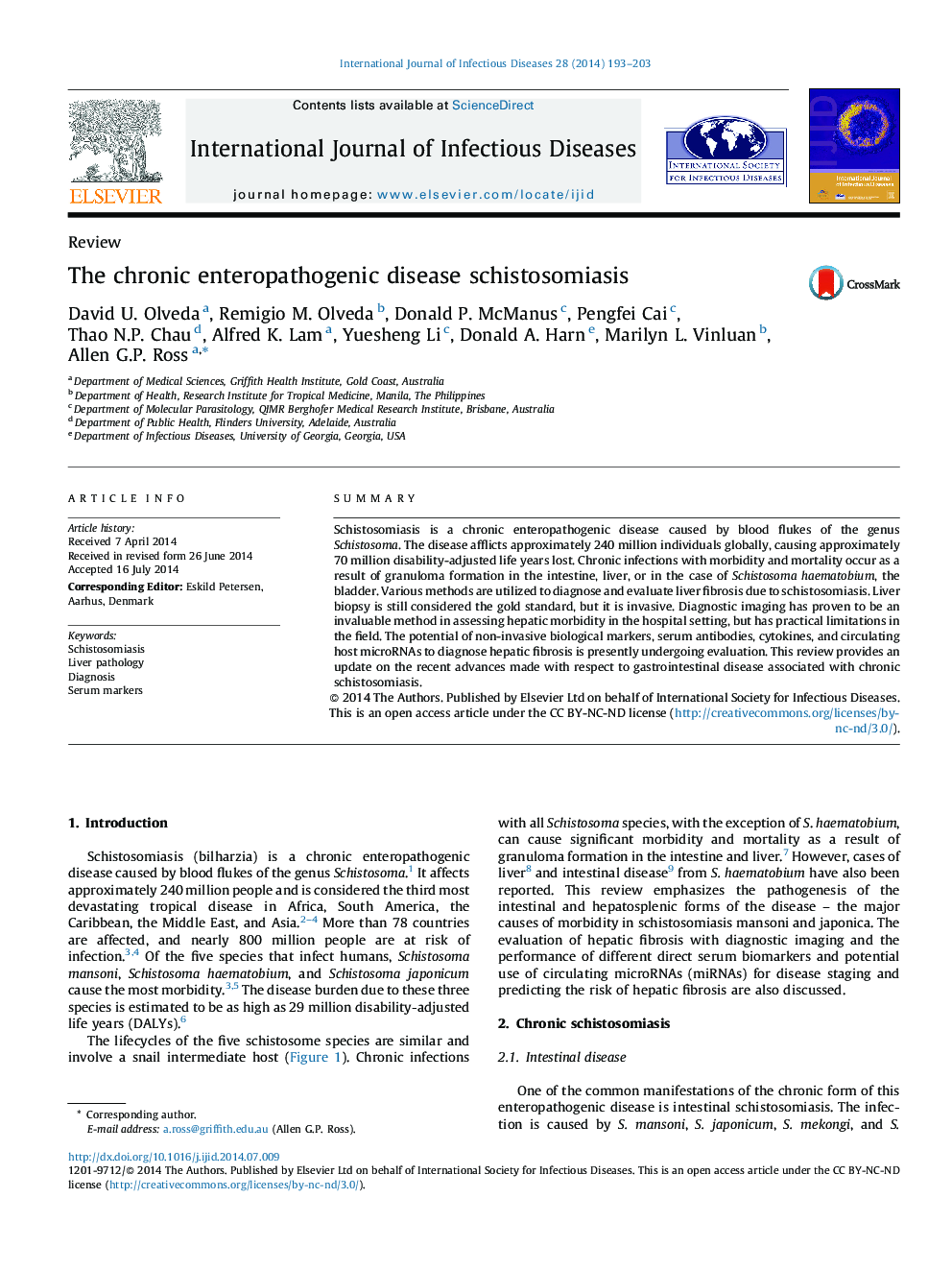| Article ID | Journal | Published Year | Pages | File Type |
|---|---|---|---|---|
| 3362390 | International Journal of Infectious Diseases | 2014 | 11 Pages |
SummarySchistosomiasis is a chronic enteropathogenic disease caused by blood flukes of the genus Schistosoma. The disease afflicts approximately 240 million individuals globally, causing approximately 70 million disability-adjusted life years lost. Chronic infections with morbidity and mortality occur as a result of granuloma formation in the intestine, liver, or in the case of Schistosoma haematobium, the bladder. Various methods are utilized to diagnose and evaluate liver fibrosis due to schistosomiasis. Liver biopsy is still considered the gold standard, but it is invasive. Diagnostic imaging has proven to be an invaluable method in assessing hepatic morbidity in the hospital setting, but has practical limitations in the field. The potential of non-invasive biological markers, serum antibodies, cytokines, and circulating host microRNAs to diagnose hepatic fibrosis is presently undergoing evaluation. This review provides an update on the recent advances made with respect to gastrointestinal disease associated with chronic schistosomiasis.
